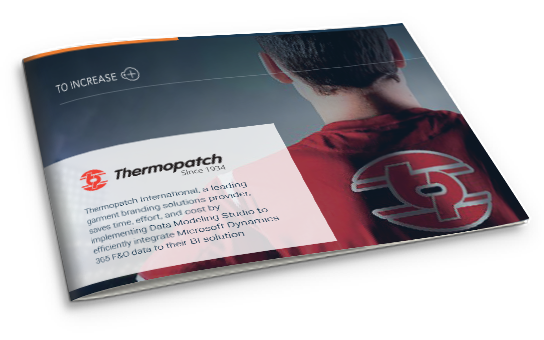Do you use Google Maps, text editor/autocorrect, or speech recognition? If the answer is yes, then AI is definitely a part of your everyday life, like many others.
But why are we talking about AI?
Owing to the massive surge in data across all industries globally, it is becoming quite challenging to rightfully manage, process, and make sense of it with just human efforts. Likewise, businesses today cannot entirely depend on traditional tools when it comes to implementing successful analytics. This is where AI-driven analytics can help.
Artificial Intelligence (AI) is not new. Today it is everywhere and has firmly rooted itself across industries, technologies, and even our day-to-day appliances.
Approximately 75% of organizations are estimated to adopt AI by 2024, which will further drive a rise in the data and analytics infrastructure everywhere. AI and Machine Learning have the power to enhance analytics capabilities to offer more valuable insights from the data by enabling better critical decision-making and driving better ROI (return on investment).
In this blog, we will explore the role artificial intelligence plays in the analytics world and the ways it can help companies up their analytics game to generate better value from their data.
The global Data-AI trends
|
Industry Statistics: If numbers are any indication, the global AI investment is estimated to jump from around $85 billion to $200 billion in the next few years, with a CAGR of approximately 25%. |
As a result of this growth, we will be able to witness the rise of smart companies (intelligent enterprises) with the use of the modern cloud and intelligent suite of technologies. Additionally, as the world is still reeling from the effects of COVID-19, AI assures organizations solutions to adapt to the new normal by helping to reduce costs and improve efficiency.
Some data analytics trends are driven by AI to look out for include:
- The shift to data-centric AI, from the traditional model-centric AI, which works to enhance the quality of data through all stages of machine learning.
- Automated data fabric will be more prominent, which is typically a data fabric with an added automation layer that will support organizational goals by helping redefine your data strategy.
- Data together with AI on the cloud will continue to prove disruptive and power data-driven business intelligence to a large degree.
- As AI-driven analytics becomes more common, analysts can shift their focus to core data analytics tasks by themselves, without the need for any technical experience or programming skills.
- More focus on small data with scalable AI will help draw more meaningful insights and customer analysis to translate into better business outcomes.
AI in business analytics
By leveraging technologies like AI and Machine Learning, companies today are better equipped to unearth patterns in data sets and yield improved actionable insights. In contrast, traditional analytics architecture includes a higher degree of manual labor and longer timeframes, which doesn’t work for the modern, fast-paced business landscape. Therefore, AI acts as a crutch to the process of analytics by supporting its challenging aspects, paving the way for data-driven decision-making, and enabling business users to manage data easily. Moreover, with AI-powered BI tools in the picture, businesses will be able to transform their processes with real-time insights, breaking data into manageable chunks and dealing with concerns arising from a lack of qualified analysts effortlessly.
Here are some additional benefits AI-driven analytics has to offer:
- Helps save precious time and minimize human efforts, otherwise spent on dealing with redundant and repetitive data analysis tasks
- Improves businesses efficiency and productivity by delivering insights faster with the help of automation
- Reduces complexity of data with the ability to manage large volumes of data effectively
- Uses advanced algorithms to learn and optimize data analytics continuously
- Bridges the gap between visual representation and meaningful insights
Leverage AI for better business analytics
.jpg?width=800&name=How%20can%20AI%20drive%20better%20business%20analytics-01%20(1).jpg)
AI-powered analytics and business intelligence tools have the ability to identify why certain things are not working for you, allowing you to learn and create a strategy and make decisions based on the results. Now that we understand how AI can help realize analytics more efficiently, let’s look at some ways AI can successfully drive your overall data-driven strategy.
Speeds up data preparation
It is a known fact that data preparation is the most time-consuming process for organizations to realize analytics. However, the inclusion of AI-driven analytics can support data analysts by automating demanding processes such as transforming, extracting, and loading, providing clean and high-quality data ready to be used for analytics.
Enhances accuracy
With AI-driven analytics, organizations are better equipped to learn patterns and behaviors more accurately and help understand correlations, which otherwise may be impossible or prove to be extremely difficult for analysts. Machine Learning algorithms can help perform a large number of computations at a time, although it does depend on how well the algorithms are built in the first place.
Capitalizes predictive analytics
Comprehending industry trends and consumer behavior can drive better business outcomes and customer experience. Predictive analytics can be used to analyze a company’s current situation and forecast future outcomes, helping organizations take the right action. As per a study by McKinsey, AI-powered forecasting has the potential to lower the risks and errors in supply chain settings by 30 to 50%.
Enables data querying
AI makes data analytics a two-way conversation between businesses and their data, making it more interactive and easier for users to get their queries answered. Here the queries are inputted in normal language and are then translated into machine language with the help of NLQ (Natural Language Querying) and NLG (Natural Language Generation). This process yields meaningful, actionable insights which are easy to understand and in real-time.
Offers industry-specific advantage
With so many data points that could influence and impact change, AI-driven analytics creates a perfect environment for industries such as eCommerce, fintech, telecom, and others. Challenges with data will be continuous, but with AI in the picture, one can identify changes, generate real-time forecasts, limit security loopholes, and reduce churn rate.
Elevates text analysis
Text analysis with the use of NLP (Natural Language Processing) can make way for unraveling groundbreaking insights, with its ability to seamlessly read open-ended or unstructured data. It yields qualitative results, that go beyond metrics to help understand why something is happening. This can be used to detect semantics, classify text under different topics, and extract data from the text, further creating an edge for competent data analysis.
Take the first step to jumpstart your analytics journey
In the times ahead, we can expect AI-driven analytics to prove to be an indispensable asset to organizations, as these offer capabilities that traditional data analysts would not be able to match when it comes to scalability, speed, and agility. Specifically, machine learning algorithms will see a higher utilization, complementing technical teams and enabling them to better deal with changes.
Furthermore, the increase in the amount of data being produced and its increasing complexity requires more than just human efforts. Many enterprises have already started adopting AI in analytics, establishing themselves to be 10 times more efficient by tackling data smartly while gaining the upper hand, compared to the rest.
Where do you currently stand in the race towards achieving faster and more efficient analytics and creating more value from your data?
We understand implementing analytics can be complicated, and even some of the bigger organizations fail to do so effectively. If you’re interested in discovering more about how analytics can optimize your business operations, check out this case study on how we helped Thermopatch, a leading garment branding solutions provider realize successful analytics and become more data-driven. The case study will offer insights into how Thermopatch streamlined its data extraction and integration efforts with our Data Modeling Studio.


